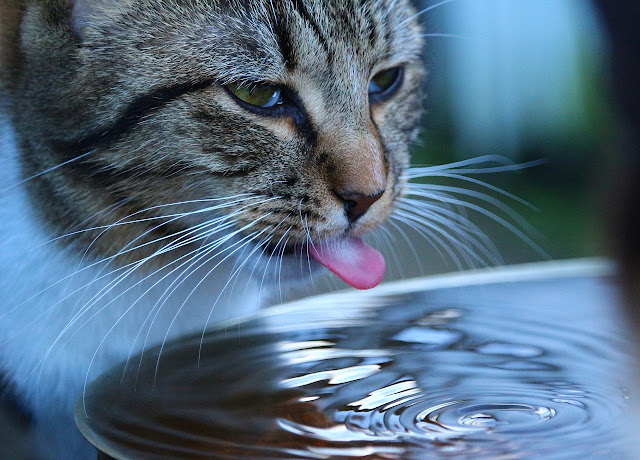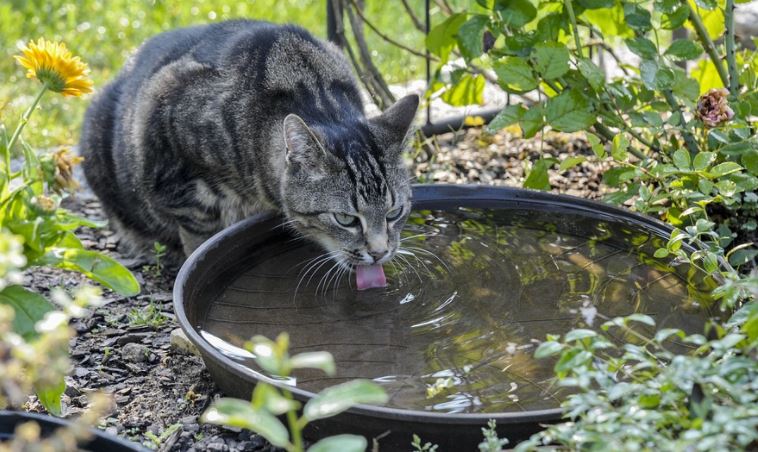Today we are going to see How much water does a cat drinks and what would happen if your cat doesn't drink enough water.
Do you thoroughly understand how much water your cat should drink? Or are you aware of the fact that in the wild, cats consume prey that is approximately 70% water? So it's apparent that they need to drink lots of H2O in order to survive.
Here are some facts about feline water intake:
- Cats tend to be creatures of habit, so if they're used to drinking water from a certain spot in the house, they'll continue to drink there.
- Cats usually drink more water when it's hot outside or when they're exercising.
- Some cats like to drink running water, while others prefer still water.
- The average cat drinks between 2 and 4 cups of water per day.
So how can you make sure your cat is drinking enough water? One way is to place several water bowls around the house - one in each room, if possible. You can also buy a pet fountain, which will keep the water flowing and is often attractive to cats. And be sure to keep fresh water in the bowls on a daily basis.
What happens if your cat doesn't drink enough water
One of the first signs is urinary tract problems, including bladder stones and crystal formation. Another sign is dehydration that can lead to lethargy, dry skin, and an increased heartbeat. Be sure to consult your veterinarian for advice on how much water your cat should drink.
How to tell if your cat is Dehydrated
dehydration in cats can be difficult to identify, as they often hide their symptoms. However, there are five common signs of dehydration that you should watch out for:
1. Lethargy and poor energy levels
If your cat is usually quite active but has suddenly become lethargic, this could be a sign of dehydration.
2. Dry nose and gums
Another common sign of dehydration is dry and tacky-feeling nose and gums. This means that your cat's saliva has become quite thick, an indication that they're not taking in enough fluids.
3. Increased skin elasticity
If you pinch the skin on the back of your cat's neck and it stays at a peak for a second or two, they're most likely dehydrated. A healthy cat's skin will immediately snap back into place, as its body is holding enough fluid volume to do so.
4. Decreased appetite
If your cat isn't eating as much as usual or shows no interest in its food, this could be another sign of dehydration.
5. Increased thirst
As their body becomes more and more dehydrated, cats often become very thirsty. Look out for excessive water consumption or licking of lips as signs that your cat needs more fluids.
How much water should a cat drink a day?
A healthy cat should drink around 1.5 cups of water per day, but this can vary depending on the cat's diet and activity level. Canned food typically contains more moisture than dry food, so cats who eat mostly canned food may need less water than those who eat mostly dry food. Likewise, active cats will need more water than inactive cats.
If your cat does not drink enough water, she may become dehydrated, which can lead to health problems. Signs of dehydration in cats include sunken eyes, dry mouth, and lethargy.
How long can a cat live without water?
Cats are able to survive up to seven days without water, but they will become dehydrated and suffer health problems if they go without for longer than that. It's important to make sure your cat has access to fresh water at all times, especially in hot weather when they may need to drink more often. If your cat does not have access to water, or if you are going on vacation and will not be able to take your cat with you, consider hiring a pet sitter who can make sure your cat stays hydrated.
Dehydration can cause a number of health problems in cats, including kidney failure, seizures, and even death. If you think your cat might be dehydrated, you will need to take your cat to a veterinarian as soon as possible. Depending on the severity of his dehydration level, he may be given an IV and some or all of his bodily functions could be supported until he is adequately hydrated.


